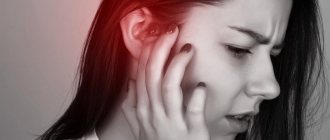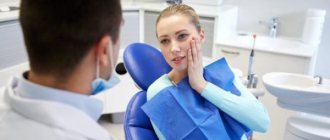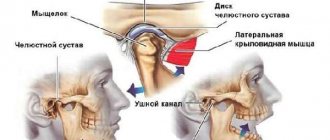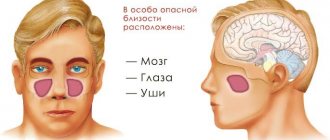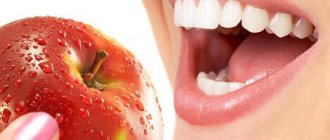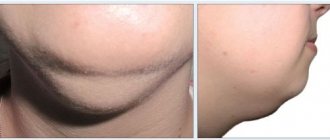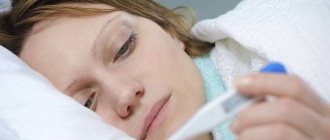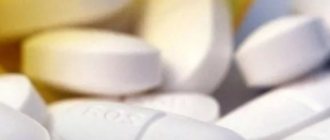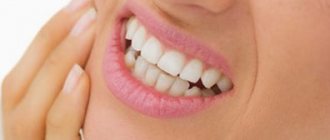Causes of pathology
Representatives of the fairer sex may experience headaches and jaw spasms during pregnancy. Symptoms are also observed during the development of diseases in the human body. Most often, patients notice it during yawning. The sign is diagnosed in a person with bruxism.
Patients with osteochondrosis and other diseases of the cervical spine report the appearance of a symptom. Muscular or nervous strain often leads to illness. If the patient has somatic diseases, this leads to patrolology. The right or left side of the jaw is affected by injuries.
There are a large number of causes of jaw cramps and head pain, which can be determined by pathology and effective therapy can be prescribed.
Recommendations: what to do if you have frequent leg cramps
Some types of physical exercises aimed at stretching muscle fibers will help relieve muscle cramps in the legs.
For the muscles of the inner thighs : sit in a half-squat, alternately placing your left/right leg to the side and stretching your entire body towards your toes.
For the quadriceps muscle : “lunge forward” pose with the center of gravity transferred to the foot of the right leg and the knee of the left (in this case, it is necessary to pull the left foot towards the back). Repeat, changing the previous position of the legs.
For calves and calf muscles : a small lunge with the right leg forward so that the foot is at a distance of 15-20 cm from the floor surface. Pull the sock in a “towards and away” motion. Repeat on the other leg.
However, physical exercise alone is not enough to get rid of pain in the head and legs! You should seek qualified medical help and follow all medical orders and recommendations.
Spasms or pain in the jaw can indicate the presence of various diseases of the body . It is not always possible to determine the cause on your own, and if the spasms do not go away on their own, but cause concern, you need to consult a specialist and undergo an examination.
Irritating factors
When a joint is dislocated, regardless of its severity, the muscles involuntarily contract during the period of eating. This is why patients complain about the occurrence of a symptom. This condition is diagnosed after eating. This is explained by the occurrence of esophageal spasm after eating certain foods. If the patient has difficulty swallowing, this leads to muscle spasms. According to the etiology of the disease, the patient should consult a gastroenterologist or neurologist.
If the patient has a sedentary job, then this becomes the cause of the symptom. It appears in people who are excessively tired for a long period of time. At risk are specialists who work with computer equipment. If a person does not stay in the fresh air, this leads to the appearance of pathology. It is diagnosed in patients after nervous strain and stressful situations.
There are a huge number of symptom-provoking factors that must be avoided in everyday life.
Treatment
A mild spasm can be stopped quite quickly on your own at home. To relieve an attack, you must first provide a flow of fresh air. It is advisable to take a horizontal position and place a pillow under your head.
It is recommended to drink a glass of heated water and keep your feet cool for a short time. Self-massage relieves symptoms of vasospasm well. If attacks recur frequently or their manifestations are severe, you should definitely consult a doctor and start treatment.
Medicines
Drug therapy in this case is complex. To relieve an attack, mild sedatives and antispasmodics are used. In the future, etiotropic treatment is prescribed, including drugs of various groups:
- Antidepressants (Amitriptyline, Azafen) are indicated to stabilize the emotional state, since attacks often occur against a background of increased anxiety and panic attacks.
- Nootropics Nootropil, Piracetam are intended to stimulate cognitive functions and mental activity.
- Calcium channel blockers (Anipamil, Cinnarizine) have an anti-ischemic, vasodilating effect.
- Tablets that improve blood circulation - Vinpocetine, Cerebrolysin, Cavinton.
- Antispasmodics – Drotaverine or No-shpa.
- Sedatives – valerian, motherwort.
In the presence of atherosclerosis, infections, hypertension, appropriate drug therapy is carried out in parallel.
Massage
To relieve spasm of cerebral vessels, you can use self-massage techniques. By pressing on certain areas of the head, you can reduce pain, restore normal blood flow, and reduce pressure. It is recommended to do massage at least 5 times a day to prevent recurrent attacks. You need to work on special points quite intensively, massaging them in a circle until they become slightly red.
Provoking diseases
Jaw spasms and headaches accompany various diseases in the human body. Symptoms most often appear when:
- Injuries to the face and neck. With mechanical impact on the face, a fracture of one or both jaws is diagnosed. In this case, the patients' jaw joint is damaged. If the position of the jaw is incorrect, a decrease in its mobility is diagnosed. The injury is accompanied by pain in the jaw area, which radiates to the head.
- Bruxism. The onset of the symptom is observed in the morning after a person wakes up. The disease is accompanied by severe clenching of the jaw during sleep and grinding of teeth. If the pathology is not treated in a timely manner, loss of tooth stability is diagnosed. If the patient has crowns, they are erased due to illness. Pathology leads to complications in the form of dysfunction in the temporomandibular joint. The disease can only be identified by strangers.
- Diseases of the cardiovascular system. If patients are diagnosed with angina, it is accompanied by pain in the jaws, which radiates to the head. The disease is accompanied by decreased sensitivity of the left upper limb.
- Arthritis. The disease develops in elderly patients. In pathology, convulsions are observed in the lower jaw. When the disease occurs, the jaw joint is deformed, which eliminates the possibility of proper performance of its functions. The patient experiences pain when chewing food or talking.
- Dental diseases. With caries or complicated pulpitis, not only the bone tissue of the tooth is destroyed, but also the gums. The disease is accompanied by swelling, which compresses the bundle of nerve fibers. This leads to spasm and pain. If an abscess, periodontitis, or limited ostiomyelitis occurs in the patient’s body, then this becomes the cause of the symptom.
- Nervous system disorders. When changes occur in the body against the background of depression and stressful situations, a reaction of the nervous system is observed. If the muscles are in constant tension, this causes spasm. In the absence of tone, numbness and weakness are diagnosed. Elimination of symptoms is carried out with sedative medications. The onset of headaches and jaw spasms is observed after experiencing anger or severe fear.
- Otolaryngeal diseases. The appearance of symptoms is observed with damage to the larynx or tonsillitis. The cause of the pathology is a tumor process. Spasms in the ear area appear with neuralgia. To avoid the symptom, the patient is prohibited from talking on the phone, pressing it to his ear with his shoulder. In order to relax the muscles, massage above the ear.
- Hypoxia of the brain. This disease is accompanied by impaired blood circulation in the brain area. The provoking factor for the appearance of the pathological condition is the patient’s prolonged stay in a stuffy room.
There are a large number of diseases in which the jaw cramps and there is pain in the head area. If a symptom occurs, the patient should seek help from a specialist who, after conducting diagnostic measures, will prescribe effective treatment.
Physical impairments and disorders
The main factors for the appearance of cramps in the lower extremities, which indicate the root causes of convulsive muscle contractions, are:
- suffered injuries of varying severity. At the same time, the patient feels a headache and general physical fatigue, fatigue sets in, and sweating increases.
- diseases of the central nervous system. Progressive chronic diseases accompanied by severe disturbances in the functioning of the brain and peripheral nervous system (epilepsy, neuroses, tetanus, etc.).
- vascular crises and dystonia (cerebral vasospasm). Prolonged spasm of blood vessels, resulting in a decrease in the lumen due to narrowing of their walls.
- severe metabolic disorders and poisoning, when the body's loss of water and salt reserves can lead to convulsive muscle contractions, accompanied by pain in the arms and legs.
- subarachnoid hemorrhage, in which there are complaints of the sudden appearance of blinding pain in the head.
- intracranial hypertension – increased intracranial pressure (ICP).
- meningitis (inflammation of the lining of the brain). The patient suffers from increasing pain, body hyperemia, photophobia, and stiffness of the neck muscles (rarely, pain in the legs).
- fibromyalgia. They are characterized by chronic musculoskeletal symmetrical pain throughout the body, causing disturbances in the alternation of sleep and wakefulness phases. As a rule, no abnormalities can be diagnosed in patients with fibromyalgia. In most cases, doctors do not recognize such a diagnosis or clarify it by exclusion.
- ARVI and acute respiratory infections. Acute respiratory viral infections also cause headaches and seizures (with complications). The main reason for the occurrence of such symptoms is that the influenza virus wandering in the blood causes irritation of the cerebral cortex, which is responsible for controlled muscle contractions.
As you can see, there is a clear relationship between headaches and leg cramps.
Localization location
In accordance with the location of the spasm, the causes of its occurrence are determined. Patients may present with one symptom or be accompanied by headache. If the patient's lower jaw cramps, this indicates that the trigeminal nerve is affected. That is why pain is observed in one half of the face in the area of the teeth. The duration of the attack is 10-20 minutes.
In case of spasm in the lower jaw, differential diagnosis is recommended, which will exclude the occurrence of oncological diseases in the head, nasopharynx, muscles, and oral cavity. If there are suspicions of malignant neoplasms, it is recommended to consult a surgeon, who, after diagnosis, will prescribe effective therapy.
With a headache, patients may experience cramping of the jaw and cheekbones at the same time. This indicates the progression of arthritis, arthrosis, and joint dysfunction. These symptoms appear in vascular diseases when there is insufficient blood supply.
The cause of the development of symptoms can be determined in accordance with the place of its manifestation. This is done using special diagnostic techniques - blood tests, computer and magnetic resonance imaging, echoencephalography, etc.
Contacting the doctor
If spasms in the jaw area are diagnosed during a headache, this indicates disorders in the human body. They can be identified through comprehensive diagnostics. When a symptom appears, the patient should consult a doctor, even if it is mild. The sooner the cause is determined, the more effective the treatment. Thanks to timely diagnosis of the disease, the patient can get rid of the possibility of developing complications.
If severe pain is observed during cramps in the jaw area, then a person should consult a doctor. It is necessary to visit him if the symptoms do not disappear after taking analgesic medications, non-steroidal anti-inflammatory drugs, or antispasmodic medications. An exacerbation of signs of pathology is observed during coughing, chewing, swallowing, and talking.
An indication for consulting a doctor is redness and swelling of the skin. Patients experience signs of asymmetry. If the headache is severe and throbbing, it is recommended to visit a doctor. Consultation is necessary for convulsive contractions of facial muscles. If signs of intoxication of the body and an increase in body temperature occur, it is recommended to undergo examinations.
If the patient observes symptoms for a long period of time, then he is strictly forbidden to self-medicate. The patient must remember that antispasmodics and analgesics can eliminate the symptom, but will not get rid of the cause.
Jaw pain and cephalalgia can be diagnosed in a person if he remains in one position that is uncomfortable for him. With this etiology of the symptom, there is no need for treatment, as it will go away on its own.
What to do if your jaw cramps?
Pay attention to when and in what place you experience cramps and what causes them. A visit to the doctor is necessary if:
- spasms in one part, there is a rise in temperature,
- swelling;
- severe pain;
- cramps in the lower part of the face and pain radiates to the eye;
- constant, lingering pain;
- throbbing pain with spasm.
Systematic discomfort in the oral cavity, which is complemented by cephalalgia, rarely turns out to be an accident or a variant of the norm. The simultaneous appearance of such symptoms is an indication to consult a doctor. First, you should visit a therapist who will assess the situation, conduct an initial examination, and refer you to a specialized specialist.
If your jaw regularly cramps and your head hurts severely, it is better to stop using traditional medicine, taking medications at your own discretion, and performing physical therapy. Actions that are not coordinated with a medical professional threaten serious complications, chronic pathologies, and a decrease in the quality of the jaw apparatus.
Providing first aid
The specifics of providing first aid depend on the characteristics of the disease. If the patient experiences an inflammatory process, it can be relieved using dry heat. If spasm occurs during chewing, the patient should alternately apply cold and hot compresses.
If the symptom accompanies a dental disease, then it is recommended to take Tempalgin, Analgin, Ketorol, Ibuprofen. The person should visit the dentist soon. Before going to the dentist, you should stop taking medications, as this may complicate the process of diagnosing the disease. For caries and pulpitis, make baths based on herbal decoctions. If a symptom is observed after tooth extraction, then you need to rinse your mouth with a soda solution.
If after the onset of a symptom it is not possible to visit a doctor, then the patient is provided with complete rest. Eating solid food is strictly prohibited. A person needs to limit jaw movement, so eating and talking should be avoided. If a dislocation is observed, massage and gymnastic procedures are recommended.
Head pain and cramps in the jaw area are a symptom complex that accompanies a variety of diseases. To eliminate unpleasant symptoms, it is recommended to determine the cause of their appearance. Therefore, the patient is recommended to contact a medical center for diagnostics, after which a specialist will decide what to do to combat the symptoms.
TMJ dysfunction
Temporomandibular joint dysfunction (TMJ) can occur from external forces that overload the joint. Diagnosing this pathology is quite difficult, since it has many causes and symptoms similar to other diseases.
With dysfunction, the following manifestations are possible:
- pain in one or both joints, radiating to the head, neck and upper back;
- Difficulty opening and closing the mouth and chewing food;
- crunching when moving the jaws;
- teeth grinding at night (bruxism), breathing pauses (apnea);
- noise, ringing in the ears.
Treatment of dysfunction depends on the cause that caused it. This may include correcting the bite, installing dentures, or wearing special night trainers (splints). To relax the muscles, the Myotronix device is used, which helps normalize the position of the lower jaw.

